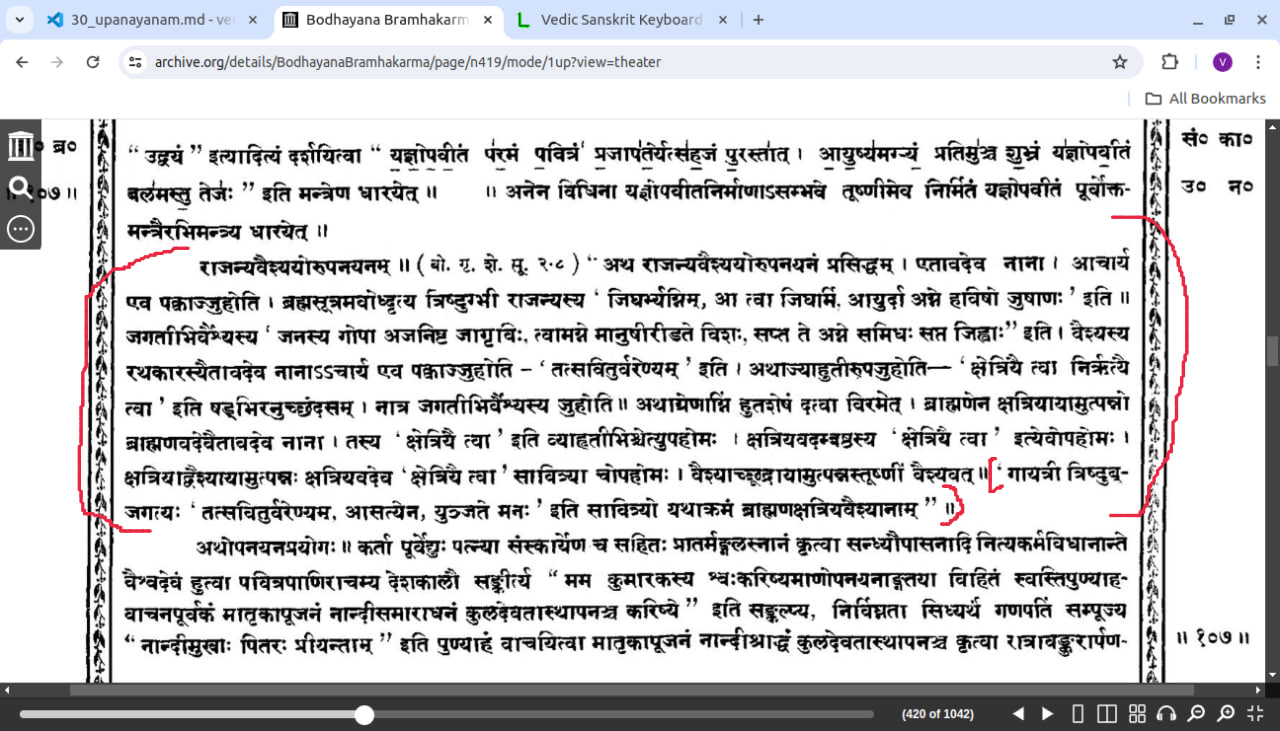Often, footnotes which appear in the bottom of the page in a physical book, appear without separation in raw OCR text on screen. This confuses the reader. Hence, it should be properly formatted.
Every footnote has a reference position/ mark, and a definition. Example in the below image (right click and open it in a new window for clearer view):

In our markup, every footnote should have it’s references and definition clearly marked.
Example 1
Consider the footnote in the image below (right click and open it in a new window for clearer view):

Here is how it should be presented in the markdown file:
|
|
Observe:
- Footnote numbers have been formatted specially -
[^1698]etc. - Footnote definitions can be of two styles. Indenting is important in the second style, which can accommodate multiple paragraphs. (MD Guide.)
- We may choose to break paragraphs, but not sentences, so as to define footnotes near their place of use. It is ok to place footnotes at the nearest logical place - example at the end of the paragraph or list.
- Footnote defintion should be preceded by an empty line.
Testing formatting: Use https://stackedit.io/app#
Multiline footnotes
There is a famous poem[^13].
[^13]:
The poem goes:
> Twinkle twinkle little star
How I wonder what you are.
>
> Up above the world so high!
Like a diamond in the sky.
Observe that each line in the footnote definition has 4 initial spaces,
and that there is an empty line in the beginning.
Regarding paragraph formatting, line separation etc.. - usual markdown conventions (described elsewhere apply.)
यत्र दीर्घोद्धरणम् (श्लोकसदृशम्) भवति, तत्रैवम् अवश्यं क्रियताम्।
अन्यथापि पादटिप्पन्यवगतौ paragraph-विन्यासः शोभते चेद् एवम्।
Deduplication
प्रत्येकस्यां सञ्चिकायां परस्परभेदवतां पादटिप्पनीनां सङ्क्यानाम् परस्परभेदो भवेत्।
यत्र यत्र [^3] इत्य् अस्ति, तत्र तत्र समाना टिप्पनी दर्शनीया चेद् भिन्ना वार्ता। किन्तु +अत्र (उदाहरणार्थम्) -
[^3]: Caland's text reads tathai'vāñjanam. It needs to be emended as tathai'vāntarāñjanam following the earlier occurrence.
[^3]: TĀ IV.9.1
[^3]: TĀ IV.8.3
इत्यादि बहुविधटिप्पन्यो निर्दिष्टाः समाननाम्ना [^3] इत्यनेन ।
एवंं तर्हि कां कुत्र दर्शनीयम् इति सङ्गणकं कथं जानीयात्?
अत एव पार्थक्यं कल्पनीयम्।
भेद-कल्पनार्थं पृष्ठसङ्ख्या-स्थापनं युज्येत।
यथा १२तमे पृष्ठे वर्तमानाय [^१] इति सङ्केताय [^१_१२] इति लेखनम्। परिष्कारोदाहरणं यथा ऽत्र ।
अवरपक्षय् एवम् अपि यदृच्छया पृथक्करणं शक्यम् -
[^3_1]: Caland's text reads tathai'vāñjanam. It needs to be emended as tathai'vāntarāñjanam following the earlier occurrence.
[^3_2]: TĀ IV.9.1
[^3_3]: TĀ IV.8.3
Quote used entirely replacing author’s words

Reg. example above -
वस्तुतः “राजन्यवैश्ययोर् उपनयनम्” इत्यस्मिन् विभागे वर्तमानम् अखिलं ग्रन्थान्तराद् उद्धृतम् - आद्य्-अन्तयोर् वर्तमान-"-चिह्नेनैतज् ज्ञायते। तथापि स्ववचनस्थाने हि प्रयुक्तम्। अतस् तत्रोद्धरणचिह्नदानं नापेक्षितम्।
किञ्च, तद्-अन्तः यद् उद्धरण-जातम् अस्ति तत् तु दर्शनीयम्।